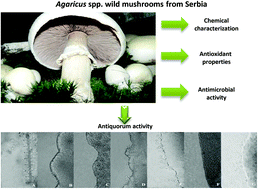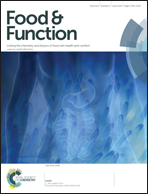A comparative study on edible Agaricus mushrooms as functional foods
Abstract
Agaricus bisporus is a cultivated mushroom; A. bitorquis, A. campestris and A. macrosporus are edible mushrooms growing wild in nature. A chemical characterization was carried out with samples that originated in Serbia. Antioxidant, antimicrobial and anti-quorum sensing properties of their methanolic and ethanolic extracts were assessed. A. campestris had the lowest caloric value and total sugar content and showed the highest concentration in organic and phenolic acids, as also in tocopherols (mainly γ-tocopherol). In general, the methanolic extracts showed higher antioxidant, but lower antibacterial and antifungal potential than ethanolic ones. Sub-inhibitory concentrations of the ethanolic extracts demonstrated reduction of virulence factors, AQ inhibition zones, twitching and swimming motility. The biofilm forming capability of P. aeruginosa PAO1 was also reduced in a concentration-dependent manner at sub-MIC values. The extracts of the tested Agaricus species are a promising source of antioxidant, antimicrobial and antiquorum sensing compounds.


 Please wait while we load your content...
Please wait while we load your content...